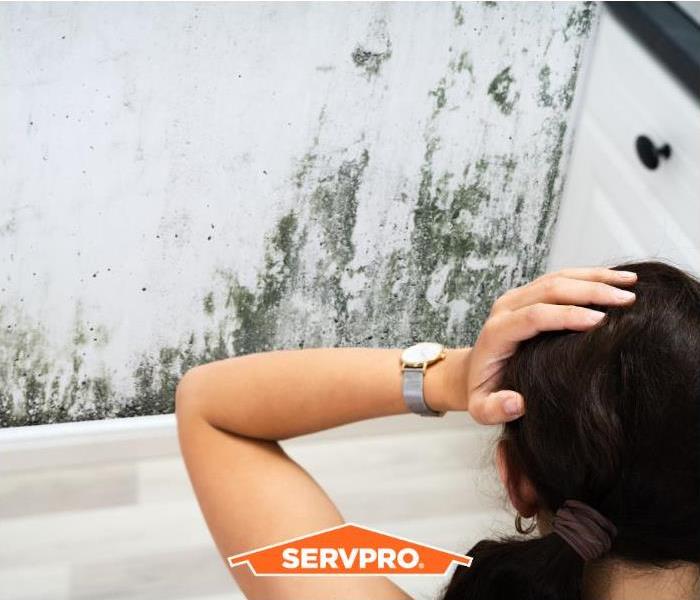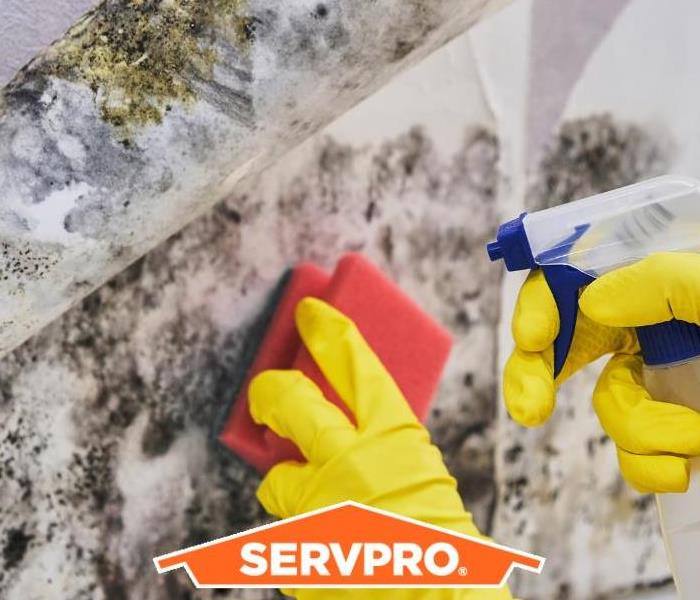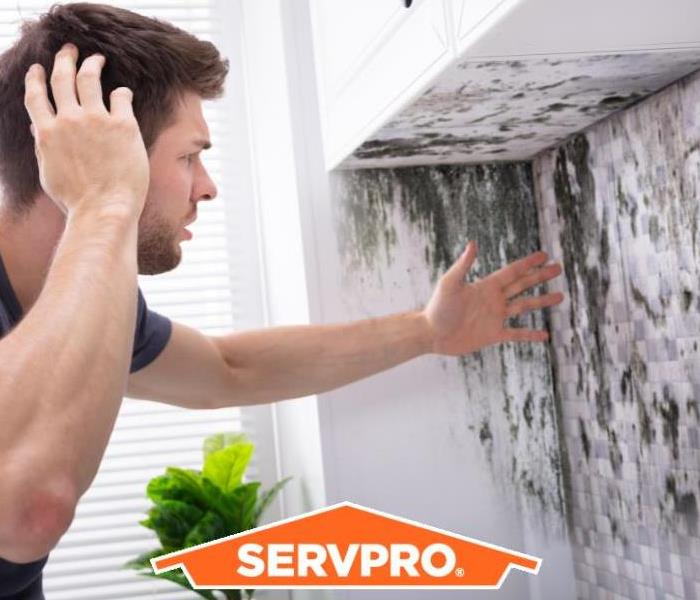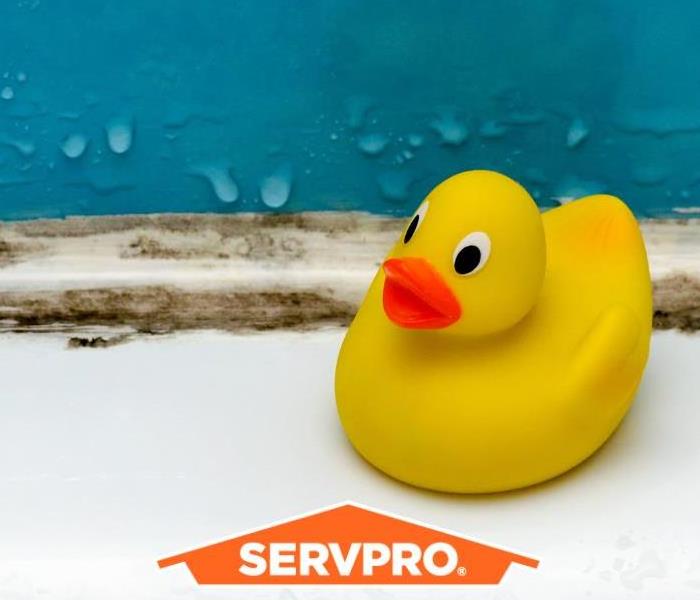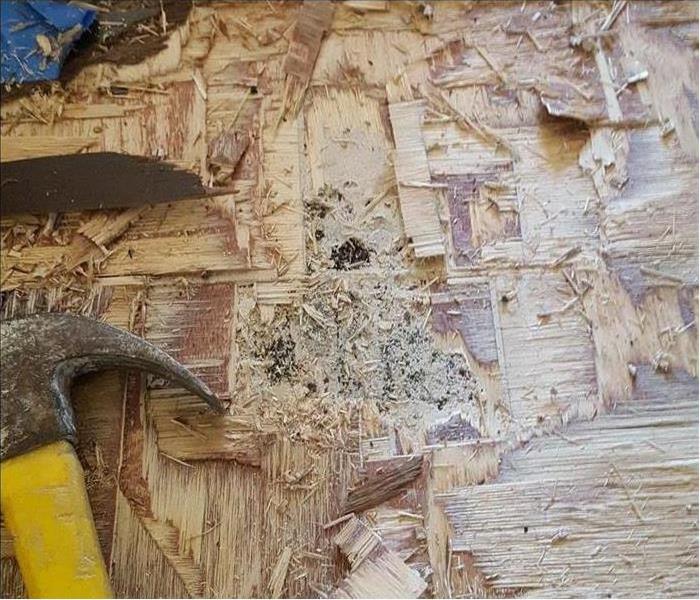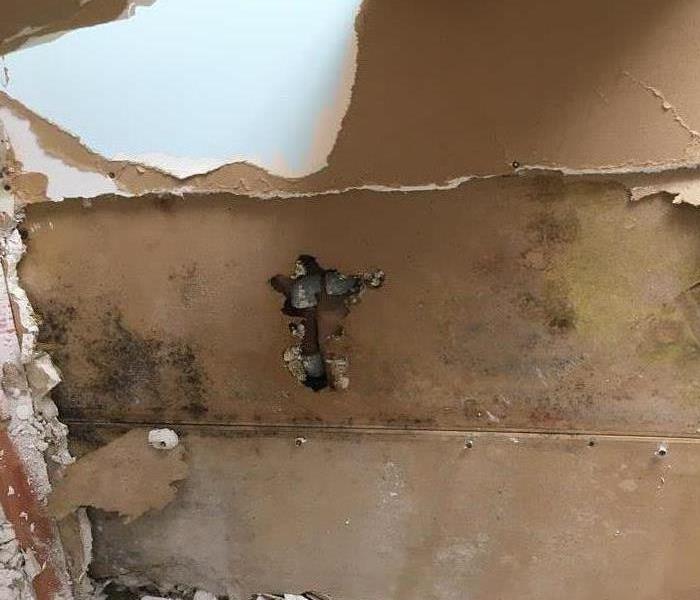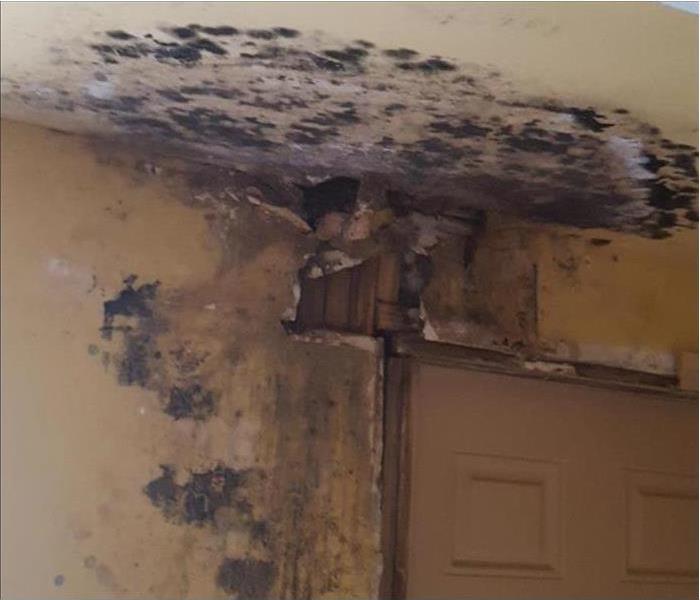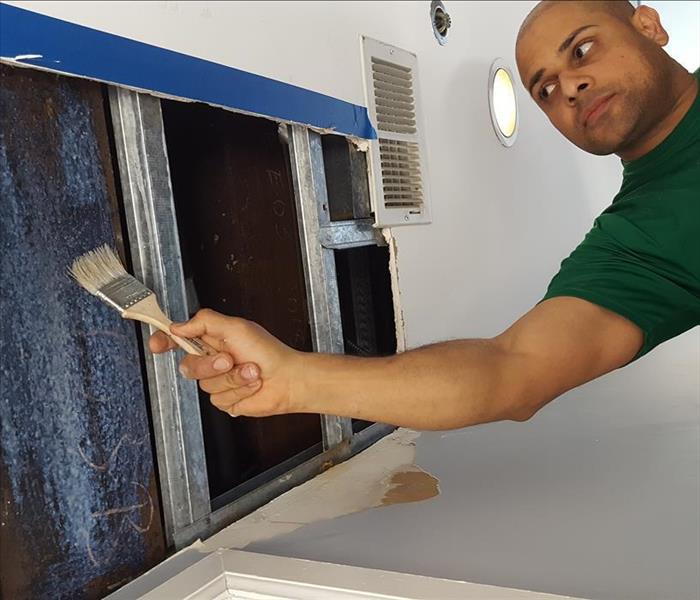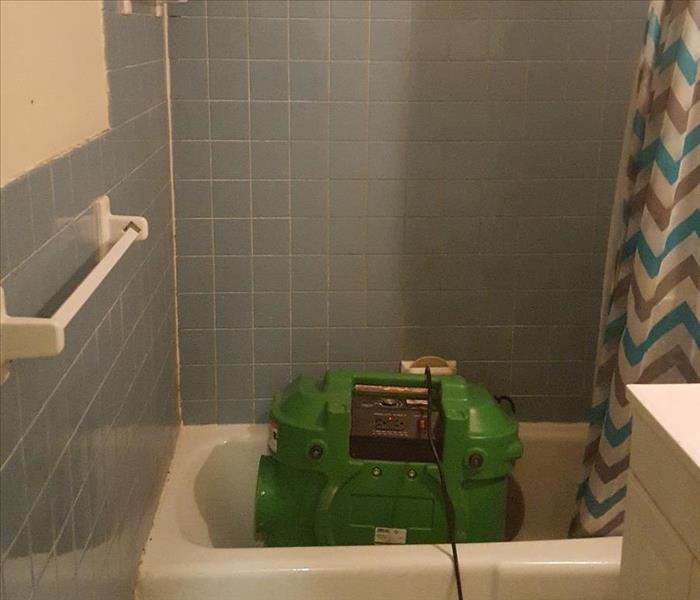Recent Mold Remediation Posts
Mold Prevention 101: Tips to Keep Your Home Mold-Free
1/4/2024 (Permalink)
Keeping your home mold-free is more than just a matter of cleanliness - it's about protecting your family's health and the integrity of your living space. Mold, a common yet potentially harmful intruder, thrives in damp, dark environments, and preventing its growth requires proactive measures. In this guide to mold prevention, we'll explore simple yet effective tips and strategies to fortify your home against mold infestation. From moisture control techniques to regular inspections, discover the key steps to maintain a healthy, mold-free environment for you and your family.
Watch the Humidity Levels
Monitoring humidity levels in your home serves as a pivotal defense against mold growth. High humidity creates an ideal breeding ground for mold, fostering its development on various surfaces. By keeping an eye on regulating indoor humidity, typically maintaining levels below 60%, you can prevent mold growth and moisture accumulation - which is what mold spores thrive on. dehumidifiers, ensuring proper ventilation, and promptly addressing leaks or condensation issues not only create a less hospitable environment for mold but also hinder its ability to take hold and become a major issue.
Create Good Air Flow
Establishing adequate air circulation within your home acts as a powerful deterrent against mold formation. Good airflow facilitates the dispersion of moisture-laden air, preventing it from settling and creating pockets of dampness where mold can grow. Proper ventilation, such as using exhaust fans in bathrooms and kitchens, allows humid air to escape, reducing the moisture content in the environment.
Also, promoting air movement through open windows or utilizing fans aids in drying out surfaces prone to exposure to mold and moisture accumulation, making it challenging from mold to find the sustained damp conditions it needs to grow. Ultimately, improved airflow not only helps maintain lower humidity levels, but also discourages the onset and proliferation of mold, contributing to a healthier home.
Find & Fix Leaks
Discovering and promptly addressing leaks in your home is paramount in the battle against mold damage. Leaks, whether from plumbing, roofs, or windows, introduce moisture into areas that are otherwise dry, providing a breeding ground for mold growth. Swiftly fixing these leaks prevents the continual ingress of water, thereby eliminating the sustained dampness mold requires to thrive. Timely repairs to water leaks not only halt the immediate moisture but also mitigate the risk of structural damage and the potential spread of mold throughout your home, protecting both your property and those living inside of it.
Call a Restoration Company like SERVPRO
If you've found significant water damage in your home, it's better to call a restoration company like SERVPRO right away. Our team can get there ASAP to dry, restore, and ensure that your property is back to preloss condition and to avoid any mold growing.
Mold has the capacity to generate allergens and irritants, posing potential health problems. Its rapid spread within your Hoboken residence or commercial space can occur within a mere 48 hours. Should you suspect a mold issue in your home or business, our team can conduct a thorough inspection and evaluation. In the event of mold presence, we possess the necessary training, tools, and proficiency to effectively address and remediate the mold infestation.
The Most Common Indoor Molds
Several types of molds commonly thrive indoors. Some of the most prevalent indoor molds include:
- Cladosporium: Found on fabrics, carpets, and wood surfaces, it's one of the most widespread outdoor molds that can also infiltrate indoor environments.
- Penicillium: Often discovered on materials with water damage, like insulation, wallpaper, and carpeting. It can produce strong musty odors.
- Aspergillus: This mold can grow on dust, building materials, and damp surfaces. Some species of Aspergillus can cause health effects.
- Alternaria: Commonly found in damp areas like showers, sinks, and basements, it's known for causing allergies and asthma symptoms.
- Stachybotrys chartarum (black molds): Often associated with water-damaged buildings, this mold can grow on materials with high cellulose content (like drywall), potentially producing mycotoxins.
These molds can trigger an allergic reaction, respiratory issues, and in some cases, more severe health issues. Removing and preventing mold growth is crucial for maintaining a healthy indoor environment.
Our Mold Remediation Process
Every mold infestation is different, from the amount of mold to the types of materials affected. Each scenario requires a unique solution, but the general process stays the same. The steps listed below illustrate our process for a "typical" mold remediation infestation:
- Emergency Contact - call us.
- Inspection and Mold Damage Assessment
- Mold Containment
- Air Filtration
- Removing Mold and Mold-Infested Materials
- Cleaning Contents and Belongings
- Restoration
About Us
SERVPRO of Hoboken/Union City is proudly owned by Lance and Jennifer Harvey- a husband and wife duo that owns two other SERVPRO locations, including SERVPRO of West Somerset County and SERVPRO of Aberdeen/Holmdel.
If you have an emergency, we're here to help. We understand the stress and worry that comes with a fire or water damage and the disruption it causes your home or business. Our goal is to help minimize the interruption to your life and quickly make it “like it never even happened.”
Learn about TEAM HARVEY: VIDEO
Everything You Need to Know About Mold Remediation
9/19/2023 (Permalink)
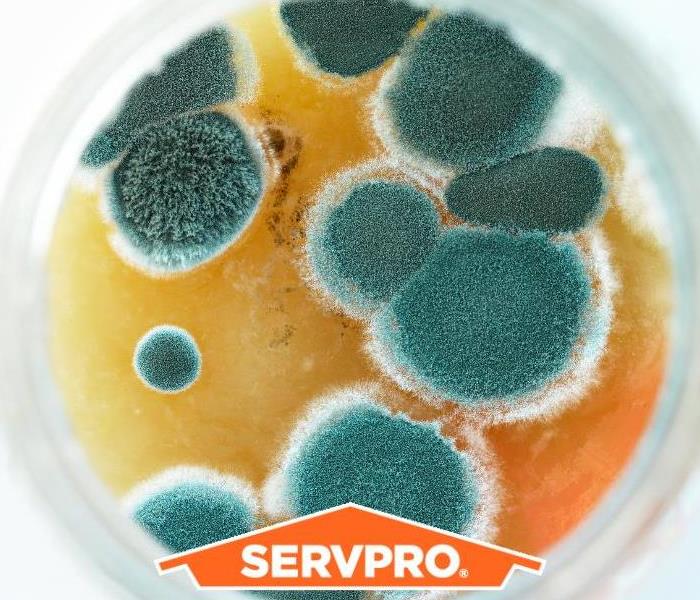 Everything You Need to Know About Mold Remediation
Everything You Need to Know About Mold Remediation
At some point in your life, you've seen mold. Whether it be in your home, on the walls, ceilings, or in your basement, or on an old piece of bread that got stuck in the back of the refrigerator. Regardless of where you've seen it, you have. However, some people don't see it and live with it every day. There are signs of mold in your home, and the sneaky mold spores that hide are even worse than the ones you can see.
It's important to fully understand mold, how it works, what mold remediation looks like, and what to look out for. SERVPRO of Hoboken/Union City is one of the best mold remediation companies around, and we're here to not only remediate mold, but to help you understand more about it.
Mold Facts
Confusion and misunderstanding surround the topic of mold and mold remediation. Some restoration companies will make claims to remove all mold from a building and this is not true. Mold spores occur naturally almost everywhere, both indoors and outdoors. These microscopic spores float along in the air and can enter a home or business through windows, air ducts, and HVAC systems. Here are some facts that you should know:
- Mold is present almost everywhere, indoors and outdoors.
- Mold spores are microscopic and float along in the air and may enter your home through windows, doors, or AC/heating systems. They can even hitch a ride on your clothing or pet.
- Mold spores thrive on moisture. Mold spores can quickly grow into colonies when exposed to water, and these colonies may produce allergens and irritants.
- Before mold remediation can begin, any sources of water or moisture must be addressed. Otherwise, the mold may return.
- Mold often produces a strong, musty odor and can lead you to possible mold problem areas.
- Even higher-than-normal indoor humidity can support mold growth. Keep indoor humidity below 45%.
Mold Damage Tips
Did you know in as little as 48 hours, mold can quickly become a problem in your home or business when there's a water intrusion? All it takes is a roof leak, or some kind of water entering into your home. Mold can cause health effects and can also cause significant damage to your property. We have the training, protective gear, and specialized equipment necessary to handle your mold problem.
So, what should you do? Stay out of affected areas, turn off the HVAC system and fans, and contact us for mold remediation services.
What shouldn't you do? Do not touch or disturb the mold, blow air across any surface with visible or suspected mold growth, attempt to dry the area yourself, or spray bleach solution or other disinfectants on the moldy surfaces.
How Can You Tell If It's Black Mold?
So, you've probably seen a lot of scary news reports about the dangers about black mold. These reports can be alarming and confusing, so it's beneficial to get the facts to better understand it.
This type of mold does produce allergens and irritants, however, many types of mold can do this, so it's important to treat any mold with caution. Just stay out of the affected moldy areas and don't touch or disturb it.
What Our Mold Remediation Process Looks Like
Every mold damage scenario is different and requires a unique solution, but the general mold remediation process stays the same. Here's what it looks like:
- Emergency Contact (201) 482-1932 - The mold cleanup and restoration process begins when you call us. Our rep will ask a series of questions to help us determine the necessary equipment, resources, and personnel.
- Inspection and Mold Damage Assessment: We carefully inspect your property for visible signs of mold. Mold feeds on cellulose and water and can be hidden from plain view. We use various technologies to detect mold and hidden water sources.
- Mold Containment: Our professionals use various containment procedures to prevent the spread of mold. We may use advanced containment procedures like negative air chambers to isolate the contaminated area with physical barriers and negative air pressure to keep the mold spores from spreading during the cleanup process. All fans and heating and cooling systems will be turned off to prevent the spread of mold.
- Air Filtration: Our specialized filtration equipment allows our professionals to capture microscopic mold spores out of the air. We utilize powerful "air scrubbers" and HEPA vacuums to prevent the spread of these mold spores while the mold remediation is in process.
- Removing Mold and Mold-Infested Materials: The mold remediation process depends on the amount of mold growth and the types of surfaces on which the mold appears. We'll use anti-fungal and antimicrobial treatments to eliminate mold colonies and to help prevent new colonies from forming. It may be necessary to remove and dispose of mold-infested porous materials, like drywall and carpeting, to remediate heavy mold growth.
- Cleaning Contents and Belongings: We clean your furniture, decorative items, curtains, clothing, and other restorable items affected by mold. We use a variety of cleaning techniques to clean and disinfect your belongings. We're also trained to remove odors and deodorization using fogging equipment.
- Restoration: Depending on the level of mold damage, drywall, subfloors, and other building materials may have been removed. Restoration may involve minor repairs, such as replacing drywall, painting, and installing new carpet; or it may entail major repairs such as the reconstruction of various areas or rooms in a home or business. The restoration step gets your home or business back to normal.
Mold Removal vs. Mold Remediation
We often get the question, "what is the difference between mold remediation and mold removal?" Well, since microscopic mold spores exist naturally almost everywhere, indoors and outdoors, removing all mold from a home or business is impossible. We understand mold and mold growth and have the training and expertise to remediate the mold in your home. So, you should know that 100% mold removal isn't possible. However, we can kill mold that we're able to detect and remediate it to protect anyone in the home or business from allergic reactions, irritants, and health problems.
What Causes Mold Growth?
Mold growth is caused by moisture. It's important to find the moisture source before it gets too bad, creating further damage. If your home or business deals with a flood or any kind of water damage, it's crucial to have it restored and properly cleaned and dried to prevent mold growth from happening. However, moisture doesn't always mean water. Mold can grow if humidity levels are too high, if your bathroom fans don't work well and you take hot showers, leaving moisture on the walls, etc. These are all situations that can cause mold growth.
What Can You Do For Mold Prevention?
If you are wondering how to prevent mold, the first step to take is to ensure that your home is not too humid. The humidity level in your household should not surpass 50% as moist conditions are a catalyst for mold to grow - as we mentioned above. You can do so by checking the humidity level more than once a day. Also, be sure to check that your house has smooth air ventilation. Continuous airflow within your home helps prevent the spread of mold.
Does a Dehumidifier Help with Prevention?
Long story short, the humidity level in your home is reduced by a dehumidifier. Humidity is increased in your home any time water evaporates. You wash the dishes, lay your clothes out to dry, or take a shower - the humidity in your home rises. As it intensifies, mold finds the perfect conditions for growth. It seems only natural that to take care of the problem is a dehumidifier, right?
Kind of, but not really. Humidity isn't the singular source that mold thrives on, although it is a biggie. Leaky roofs, flood-prone basements, and burst pipes can also be mold infestation contributors. Your humidity problem will be lessened with a dehumidifier, but if the mold is being caused by a persistent leak, it's not going to help the issue.
About SERVPRO Team Harvey
SERVPRO of Hoboken/Union City is proudly owned by Lance and Jennifer Harvey - a husband and wife duo that owns three other SERVPRO locations, including SERVPRO of Lower Manhattan, SERVPRO of West Somerset County, and SERVPRO of Aberdeen/Holmdel.
We understand the stress and worry that comes with a fire or water damage and the disruption it causes your home or business. Our goal is to help minimize the interruption to your life and quickly make it “like it never even happened.”
Mold Remediation Terms You Should Know
5/3/2023 (Permalink)
Mold is the worst. Not only is it far from visually appealing, but it’s extremely dangerous to be around. When you’re looking for a team to perform mold remediation, you should be up-to-date on the latest mold remediation terms so you know what to look for.
Anywhere at any time, a mold colony can take place. Because these colonies can spread and grow so quickly, to prevent property damage, you must act quickly. It’s best to work with a company that specializes in professional mold remediation, like SERVPRO of Hoboken/Union City.
When you’re working with any company that specializes in mold remediation, it can be confusing to hear them speak in terms common to the profession. To help you better understand what’s going on, we’ve included some of the most commonly used terms as well as brief, simplified definitions.
Spores
Emitted from fungi, spores are reproductive, microscopic structures.
Remediation
The process of a remediation of a site includes assessment, containment, removal, and treatment of the mold.
PPE
Technicians wear this type of gear during the process of remediation, specified by OSHA. The letters stand for Personal Protective Equipment.
Porous
In porous materials, mold spores are easily absorbed and can flow because these materials allow easy air passage. Sponges, wood, rubber, and some rocks are considered porous materials.
Mycotoxin
Designated as toxic to humans and produced by fungi, mycotoxins are specific compounds. The term 'mycotoxin' is usually reserved for the toxic chemical products produced by fungi that readily colonize crops.
MVOCs
Released into the air as a musty, moldy odor, and produced by mold colonies, these are chemicals. They are referred to as microbial volatile organic compounds.
Moisture Content
This is exactly what it sounds like, it refers to the content of moisture within a material. Before mold growth occurs, a greater moisture content can be sustained by various materials, i.e. wood, textiles, paneling, insulation, etc.
Microbe
Unseeable by the naked eye, a microorganism that is a type of bacteria and fungi can be referred to as a microbe.
HEPA
Used for removing particles greater than .03 micrometers by about 99.97%, this refers to an air filter technically named high efficiency particulate absorbing (HEPA) filter.
Fungi
This is a somewhat all-inclusive term. Sub classes include puff balls, yeasts, mushrooms, and molds.
Containment and Containment Barrier
To close off an infestation, seals and barriers are put into place. To control airborne spore movement, filtration devices are used. This is all in an effort of containment.
Colony
Viewable by the naked eye, a surface cluster of mold that has spread is referred to as a colony.
Antimicrobial
To combat mold and fungi, a chemical agent is used. To suppress microorganisms, an antimicrobial agent is used on direct contact.
Air Scrubber
To remove mold particulate matter from the atmosphere, this mold abatement process/device is used. Through a series of filters, air is sucked in using a high-powered fan and filtration device. A HEPA filter included.
Air Sampling
Exactly what it sounds like, samples of the ambient air are taken to test for mold and/or other contaminants.
Abatement
When, on a specific property, any source of mold is removed fully, the process is known as mold abatement.
We hope this helped out and taught you everything you need to know about the mold remediation world. If you need mold remediation done at your home or business, give us a call!
About SERVPRO Team Harvey
SERVPRO of Hoboken/Union City is proudly owned by Lance and Jennifer Harvey - a husband and wife duo that owns three other SERVPRO locations, including SERVPRO of Lower Manhattan, SERVPRO of West Somerset County, and SERVPRO of Aberdeen/Holmdel.
We understand the stress and worry that comes with a fire or water damage and the disruption it causes your home or business. Our goal is to help minimize the interruption to your life and quickly make it “like it never even happened.”
Can You Remove Mold Yourself?
4/5/2023 (Permalink)
If you’ve discovered mold in your home, don’t run to the store, grab gloves, and attempt to remove it on your own. Although you may have found some “great” DIYs on Pinterest, performing a mold remediation or removal on your own can be extremely dangerous to you and everyone in your home. Instead, call us. We’ll take care of it. You may ask why you shouldn’t take care of it on your own. Well, here’s a list of reasons why.
First, Let’s Understand Mold
Some restoration companies advertise “mold removal” and may even guarantee to remove all mold. This is a fallacy because removing all mold from a house or business is impossible; microscopic mold spores exist almost everywhere, both indoor and outdoor. Here are some facts to help you understand a little bit more about mold:
- Mold is present almost everywhere, indoors and outdoors.
- Mold spores are microscopic and float along in the air and may enter your home through windows, doors, or AC/heating systems. They can even hitch a ride on your clothing or pets.
- Mold spores thrive on moisture. They can quickly grow into colonies when exposed to water. These colonies may produce allergens and irritants.
- Before mold remediation can begin, any sources of water or moisture must be addressed. Otherwise, the mold may return.
- Mold often produces a strong, must odor and can lead you to possible mold problem areas.
- Even higher-than-normal indoor humidity can support mold growth. Keep indoor humidity below 45 percent.
Mold Could Be Deceiving to the Eye
If you see a small patch of mold that you think you can take on by yourself - stop. Mold is sneaky and it’s extremely deceiving. What we mean by that is, there could be a lot more that you cannot see. Mold thrives behind the walls, under tiles, etc.
A professional mold remediation company like SERVPRO understands that and we have the knowledge, skill, and technology to detect potential mold in walls and other hidden areas.
Mold Can Come Back Quickly
The risk of mold coming back is one of the biggest reasons why you should never attempt to clean it yourself. You’ll be putting yourself at risk and tiring yourself out for nothing. If the source of the mold is not repaired or replaced, mold is likely to reoccur within a few days.
You Need the Right Equipment & Expertise
Those Mr. Clean Magic Erasers and Lysol Wipes are not going to cut it when it comes to mold. Sure, it may take it off the surface - but it won’t get rid of it. Our remediation specialists are highly trained and include applied microbial remediation specialists, water damage restoration technicians, and applied structural drying technicians. Plus, they come with pretty cool, high-tech machines that will make the remediation process successful.
You Could Make The Situation Worse
Because mold spores float in the air and may land in other areas to begin growing again, you could cause the mold to spread into areas of your property that were previously unaffected by attempting to clean it.
It’s Very Dangerous
If you decide to clean the mold, you’re risking breathing in air filled with dispersed mold spores. This could cause mold allergy symptoms like wheezing and coughing, or worse, it could aggravate the risk of asthma in children and the rest of your household.
You Need to Act Quick
Don’t rush back from the store with cleaning supplies and get right into it. Instead, rush to call us. We follow specific procedures when it comes to mold remediation. We’ll assess the situation, contain it, remove, repair, and filter the air.
If you’ve found mold in your home, act fast by calling SERVPRO of Hoboken/Union City. We work 24/7 every day so we can ensure the safety of you and your home.
About SERVPRO Team Harvey
SERVPRO of Hoboken/Union City is proudly owned by Lance and Jennifer Harvey - a husband and wife duo that owns three other SERVPRO locations, including SERVPRO of Lower Manhattan, SERVPRO of West Somerset County, and SERVPRO of Aberdeen/Holmdel.
We understand the stress and worry that comes with a fire or water damage and the disruption it causes your home or business. Our goal is to help minimize the interruption to your life and quickly make it “like it never even happened.”
Interesting Facts About Mold
2/3/2023 (Permalink)
Mold is a kind of fungus that can penetrate surfaces, such as walls, floors, and ceilings. Often, mold grows behind walls and in crawl spaces, so they are hidden from sight. However, this does not mean that there is no mold issue. When they can be seen, depending on the type of mold, they are usually in black or green patches. In contrast, mildew is a subtype of mold that does not penetrate the material that it grows on. Instead, mildew will stay on the surface and can be easily seen. It usually grows on damp surfaces, fabrics, and paper.
But, enough about that. Let’s talk about the interesting facts about mold!
- Mold is more common in households today than it was 50 years ago.
- About 50% of homes contain mold problems.
- 100% of chronic sinus infections are caused by mold.
- There are over 10,000 species of mold.
- Mold is linked to causing 30 different health problems.
- Penicillin and blue cheese is just a petrified mold.
- Infants born during mold season are 3x likely to develop asthma and other allergies.
- There is a creepy form of mold that can move around on its own, it’s called “slime mold.”
- Mold is one of the only organisms that doesn’t need light to grow, meaning it thrives in dark, wet areas.
- Christmas tree allergies are caused by mold put into the air by the tree.
- Black mold is known as Stachybotrys Chartarum, and it’s not always black - sometimes it’s green.
Now that you’ve learned a bit about mold, let’s learn some common mold remediation terms!
Remediation
The process of a remediation of a site includes assessment, containment, removal, and treatment of mold, fire damage, water damage, etc.
PPE
Technicians wear this type of gear during the process of remediation, specified by OSHA. The letters stand for personal protective equipment.
Mycotoxin
Designated as toxic to humans and produced by fungi, mycotoxins are specific compounds.
MVOCs
Released into the air as a musty, moldy odor, and produced by mold colonies, these are chemicals. They are referred to as microbial volatile organic compounds.
Moisture Content
This is exactly what it sounds like, it refers to the content of moisture within a material. Before mold growth occurs, a greater moisture content can be sustained by various materials, i.e. wood, textiles, paneling, insulation, etc.
To find more, check out this blog.
About SERVPRO Team Harvey
SERVPRO of Lower Manhattan is proudly owned by Lance and Jennifer Harvey - a husband and wife duo that owns three other SERVPRO locations, including SERVPRO of West Somerset County, SERVPRO of Lower Manhattan, and SERVPRO of Aberdeen/Holmdel.
We understand the stress and worry that comes with a fire or water damage and the disruption it causes your home or business. Our goal is to help minimize the interruption to your life and quickly make it “like it never even happened.”
How Do Mold Spores Spread Across A House?
4/21/2022 (Permalink)
Mold is a type of fungi that grows from microscopic spores that can be found anywhere in our surroundings. These mold spores are inactive but they will spread once the humidity levels go beyond 70 percent. Temperature that exceeds 65 degrees increases the risks of mold thriving in the environment. Once the mold cluster starts thriving on surfaces, they spread and reproduce to eventually become noticeable to the naked eye. Let us explore other conditions that support the growth of mold.
Key Ingredients That Support Mold Growth
There are various key ingredients that support the growth of mold and they include factors such as the presence of mold spores, oxygen, a surface for the mold to grow, warmth, and darkness. Water can be present on any surface through stagnant water, a water leak, or high humidity levels that can kickstart the mold problems. The mold spores that are smaller may look like dirt or soot which is often the reason why people ignore them. If you do spot any mold spores regardless of the size, it is best to seek mold remediation services before they increase in size and spread.
How Do Mold Spores Spread Across Your House?
If there is a presence of mold in a crawl space or basement of your house, its spores can spread across the house. This process is known as “stack effect” whereby warm air rises and escapes through the higher floors of the house. When this happens, a vacuum is created on the lower floor which then draws air upwards onto the crawl space and basement. Dust mites, odors, and mold spores will be drawn into the main section of your house which are inhaled by the people inside.
What to Do Upon the Discovery of Mold?
Upon discovering mold in your house, there are three major steps that you need to take. Firstly, identify the source of moisture that is letting mold to thrive. After determining the water source, try to stop it or seek professional water damage repair specialists for assistance. After the water source has been stopped, you can make use of dehumidifiers and fans to keep the area dry. However, you should never use fans if the mold spores are clearly visible as they may be blown across the house and spread. Remember to always put on protective gear when dealing with mold and get rid of it upon completion.
Truth Behind House Mold
Organic materials like fabric, wood, dust, paint, and wallpaper are more than enough for mold to thrive. They act like nourishment to mold which allows it to grow and spread actively. Mold does grow year-round in any home, even the cleanest ones and a typical mold spore can be about 0.0002 inches in size which makes it almost invisible to the human eye. The best environment for mold to grow and spread is one that has adequate nourishment, humidity, and warmth in the air.
Mold infestation can have detrimental effects onto your health and in the long run, it may also cause severe damage to your property. Work with SERVPRO of Hoboken / Union City for any mold remediation services.
What Are The Consequences Of Ignoring Your Roof After Storm Damage?
4/21/2022 (Permalink)
Understanding The Role Of Structural Drying In Mold Remediation
The use of the right methods and equipment necessary for proper structural drying is crucial to your home or business. If a water leak or flood has affected your property, the safety of your property can be affected. If not cared for properly, the effects on your home/business can last for days, weeks, and even months after the initial leak or flood. Mold and mildew can result from improper structural drying. Throughout your home or building, the spread of bacteria will soon run rampant.
For these reasons and more, it is crucial that a qualified team of professional flood damage restorers handle the job. But what, exactly, is implied by "structural drying"? What does it entail? What do you need to know?
Structural Drying – What Is It?
When you remove moisture and water from structural materials, this is a process referred to as structural drying. The process must continue until the structure is dry enough to meet safety and dryness standards of a certain criteria. To dry out an area, a professional company that handles flood damage restoration can get rid of water if your home or business has been flooded. Because mold growth can be a result of extra moisture, they can help get rid of every single trace.
Structural Drying – The Principles Involved
There are a handful of principles involved in the process and concept of structural drying. They are as follows:
- Extract all water
- Airflow
- Dehumidify
- Control the temperature
Structural Drying Has Numerous Benefits
Not only is structural drying a necessity following a flood or leak, but it also has a number of benefits which are as follows:
- It can save time – The process can be efficient and safe if your structural drying is handled by a professional team.
- Secondary damage is prevented – The spread of bacteria and mold growth are prevented as part of the structure drying process. You won’t have to be concerned about lingering moisture, and to be sure your home is completely dry, special processes and equipment are used.
- It is not a destructive process – To preserve the integrity of materials critical to a building, professionals use a precise structural drying process. If moisture and water have seeped into drywall, wood, and other materials, to prevent further property damage, these professionals will do their absolute best.
- The growth of mold and mildew are prevented – Mildew and mold risks are minimized thanks to the moisture removal and air-drying processes executed by trained professionals. This step is absolutely vital to prevent problems in other areas of your property. The reason being that additional problems can arise as a result of mold spreading through the air.
Important: Here’s the most crucial piece of information you need to know if you’ve experienced a serious leak or flood and are in need of structural drying…
For Structural Drying, Contact The Experts At SERVPRO of West Somerset County
If you are looking for structural drying, mold remediation, damage cleanup, and restoration following a flood, leak, etc., SERVPRO of West Somerset County is at your service. Don't wait until mold and mildew take hold of a damp or moist area. Please contact us as soon as possible to find out more.
Common Mold Remediation Terms to Know
3/31/2022 (Permalink)
Anywhere at any time, a mold colony can take hold. Because these colonies can spread and grow so quickly, to prevent property damage, you must act quickly. It's best to work with a company that specializes in professional mold remediation. In an efficient, quick, and safe manner, they can return your property to normal.
When you're working with a company that specializes in mold remediation, it can be confusing to hear them speak in terms common to the profession. To help you better understand what's going on, we've included some of the most commonly used terms and brief, simplified definitions.
Spores
Emitted from fungi, spores are reproductive, microscopic structures.
Remediation
The process of a remediation of a site includes assessment, containment, removal, and treatment of mold, fire damage, water damage, etc.
PPE
Technicians wear this type of gear during the process of remediation, specified by OSHA. The letters stand for personal protective equipment.
Porous
In porous materials, mold spores are easily absorbed and can flow because these materials allow easy air passage.
Mycotoxin
Designated as toxic to humans and produced by fungi, mycotoxins are specific compounds.
MVOCs
Released into the air as a musty, moldy odor, and produced by mold colonies, these are chemicals. They are referred to as microbial volatile organic compounds.
Moisture Content
This is exactly what it sounds like, it refers to the content of moisture within a material. Before mold growth occurs, a greater moisture content can be sustained by various materials, i.e. wood, textiles, paneling, insulation, etc.
Microbe
Un seeable by the naked eye, a microorganism that is a type of bacteria and fungi can be referred to as a microbe.
HEPA
Used for removing particles greater than .03 micrometers by about 99.97%, this refers to an air filter technically named high efficiency particulate absorbing (HEPA) filter.
Fungi
This is a somewhat all-inclusive term. Sub classes include puff balls, yeasts, mushrooms, and molds.
Containment and Containment Barrier
To close off an infestation, seals and barriers are put in place. To control airborne spore movement, filtration devices are used. This is all in an effort of containment.
Colony
Viewable by the naked eye, a surface cluster of mold that has spread is referred to as a colony.
Antimicrobial
To combat mold and fungi, a chemical agent is used. To suppress microorganisms, an antimicrobial agent is used on direct contact.
Air Scrubber
To remove mold particulate matter from the atmosphere, this mold abatement process/device is used. Through a series of filters, air is sucked in using a high-powered fan and filtration device. A HEPA filter is included.
Air Sampling
Exactly what it sounds like, samples of the ambient air are taken to test for mold and/or other contaminants.
Abatement
When, on a specific property, any source of mold is removed fully, the process is known as mold abatement.
Call SERVPRO of Hoboken/Union City For Mold Remediation
Thanks to extensive education and experience, the SERVPRO of Hoboken/Union City team knows all the ins and outs of mold, mildew, and more. When you need us, we stand ready, waiting for your call! Have you suddenly discovered a mold and/or mildew problem that needs immediate attention? We have 24-hour emergency service and are faster to any disaster than our competition.
In addition to mold and mildew inspection and remediation we provide cleaning services, fire restoration services, residential services, and commercial services.
Call us at 201-656-0035 or contact us through our convenient online form.
Common Mold Remediation Terms to Know
3/9/2022 (Permalink)
Anywhere at any time, a mold colony can take hold. Because these colonies can spread and grow so quickly, to prevent property damage, you must act quickly. It's best to work with a company that specializes in professional mold remediation. In an efficient, quick, and safe manner, they can return your property to normal.
When you're working with a company that specializes in mold remediation, it can be confusing to hear them speak in terms common to the profession. To help you better understand what's going on, we've included some of the most commonly used terms and brief, simplified definitions.
Spores
Emitted from fungi, spores are reproductive, microscopic structures.
Remediation
The process of a remediation of a site includes assessment, containment, removal, and treatment of mold, fire damage, water damage, etc.
PPE
Technicians wear this type of gear during the process of remediation, specified by OSHA. The letters stand for personal protective equipment.
Porous
In porous materials, mold spores are easily absorbed and can flow because these materials allow easy air passage.
Mycotoxin
Designated as toxic to humans and produced by fungi, mycotoxins are specific compounds.
MVOCs
Released into the air as a musty, moldy odor, and produced by mold colonies, these are chemicals. They are referred to as microbial volatile organic compounds.
Moisture Content
This is exactly what it sounds like, it refers to the content of moisture within a material. Before mold growth occurs, a greater moisture content can be sustained by various materials, i.e. wood, textiles, paneling, insulation, etc.
Microbe
Unseeable by the naked eye, a microorganism that is a type of bacteria and fungi can be referred to as a microbe.
HEPA
Used for removing particles greater than .03 micrometers by about 99.97%, this refers to an air filter technically named high efficiency particulate absorbing (HEPA) filter.
Fungi
This is a somewhat all-inclusive term. Sub classes include puff balls, yeasts, mushrooms, and molds.
Containment and Containment Barrier
To close off an infestation, seals and barriers are put in place. To control airborne spore movement, filtration devices are used. This is all in an effort of containment.
Colony
Viewable by the naked eye, a surface cluster of mold that has spread is referred to as a colony.
Antimicrobial
To combat mold and fungi, a chemical agent is used. To suppress microorganisms, an antimicrobial agent is used on direct contact.
Air Scrubber
To remove mold particulate matter from the atmosphere, this mold abatement process/device is used. Through a series of filters, air is sucked in using a high-powered fan and filtration device. A HEPA filter is included.
Air Sampling
Exactly what it sounds like, samples of the ambient air are taken to test for mold and/or other contaminants.
Abatement
When, on a specific property, any source of mold is removed fully, the process is known as mold abatement.
Call SERVPRO of Hoboken/Union City For Mold Remediation
Thanks to extensive education and experience, the SERVPRO of Hoboken/Union City team knows all the ins and outs of mold, mildew, and more. When you need us, we stand ready, waiting for your call! Have you suddenly discovered a mold and/or mildew problem that needs immediate attention? We have 24-hour emergency service and are faster to any disaster than our competition.
In addition to mold and mildew inspection and remediation we provide cleaning services, fire restoration services, residential services, and commercial services.
Call us at 201-656-0035 or contact us through our convenient online form.
Mold And Mildew Have Separate Meanings
4/21/2021 (Permalink)
Differences Between Mold and Mildew
Mold is a kind of fungus that can penetrate surfaces, such as walls, floors, and ceilings. Often, mold grows behind walls and in crawl spaces, so they are hidden from sight. However, this does not mean that there is no mold issue. When they can be seen, depending on the type of mold, they are usually in black or green patches. In contrast, mildew is a subtype of mold that does not penetrate the material that it grows on. Instead, mildew will stay on the surface and can be easily seen. It usually grows on damp surfaces, fabrics, and paper.
In terms of appearance, mold generally appears fuzzy or slim. They often show up as spots that have irregular shapes and are black, green, yellow, brown, or blue. On the other hand, mildew generally appears powdery or fluffy and grows flatly. It usually covers the area in a white, black, or yellow patch.
Mildew mostly affects plants and crops. However, when grown indoors for a prolonged period, both mildew and mold can cause a series of health effects. This is why it is crucial to get rid of mold and mildew problems.
Common Types of Mold and Mildew
There are many types of mold, but the most common ones that grow in homes are:
- Penicillium
- Cladosporium
- Aspergillus
- Alternaria
- Stachybotrys Chartarum
The most common types of mildew to be found are downy and powdery mildew.
Getting Rid of Mold and Mildew
Unlike mold, mildew is much easier to remove because it only grows on the surface of materials. a simple spray of a household cleaner on the affected area and utilization of a brush to scrub away the mildew would be sufficient along with wearing proper personal protective equipment. As for mold, it is recommended that professionals are called in to carry out mold remediation as they have the expertise in understanding how mold grows and how to contain it.
Approach SERVPRO of Hoboken/Union City for Professional Mold Remediation
If you are facing a mold problem in your home, do not hesitate to approach SERVPRO of Hoboken/Union City for mold remediation. Our team is highly trained and experienced. Contact us for more information and our friendly customer representatives will get back to you.
Should You Test For Household Mold?
4/14/2021 (Permalink)
Household mold is a common problem faced by homeowners. A moist environment is the ideal condition for mold to grow. As immaculate as your home may be, chances are that there are still moist spots where mold will thrive in. Since mold reproduces by releasing spores into the air, it is very difficult to put a cap on the spread of mold in your home because it can get anywhere. If you are wondering if you should test for household mold, read on to find out more about this annoying infestation.
Health Effects Caused by Mold
Heavy mold growth can quickly worsen the indoor air quality of your home. When the situation gets problematic enough, even those who are less sensitive to mold can begin to experience various health effects.
Appearance of Mold
Depending on the type of mold, it can appear differently. Having said that, one of the most common household molds is black mold. As the name suggests, it looks black and can appear in the form of spots or streaks. They can be found growing on paper, fiberboard, walls, ceilings, vents, and ducts. However, not all mold growth can be plainly seen because it may be growing behind wallpapers and appliances.
Scent of Mold
Even if you do not see mold, it is possible to smell it. Depending on the type of mold, it may produce a damp, musty scent that is similar to the scent of an old book. However, not everyone is able to detect the smell of mold, especially if they are used to the smell.
Testing for Mold
If the mold can be seen, you probably do not need to test for mold. However, mold infestations can sometimes not be visible because they are hidden behind walls, objects, or in covered spots that trap moisture. Regular air quality testing to detect mold will not only alert homeowners to a mold problem, the type of mold and source of the issue can even be identified. Uncovering the source of the mold problem will help to eliminate mold.
Professional Mold Remediation and Restoration
If you are experiencing a household mold problem and want to get rid of it, you are at the right place. SERVPRO has a team of highly trained mold remediation specialists who can safely handle any mold situation. Our advanced equipment is able to detect and stop the source of water feeding the mold. Contact us today to let us know how we can help you.
Where Is Mold Commonly Lurking In Your Home?
3/10/2021 (Permalink)
Where Is Mold Commonly Lurking In Your Home?
Mold is more than just black spots on your walls – it usually grows and infects large areas especially behind walls or in places that are dark and damp. Mold can cause damage to buildings and health effects to tenants if left untreated.
If you have found serious mold growth and infestation in your home, such as after a flooding or leakage, you need to call a professional home restoration company right away. They will know how to properly rid your home of mold, even in places you don’t notice. However, you too can do your part in spotting mold growth in smaller quanitities around the house. Here are the top six hiding places of mold in a home.
Windows & Window Sills
Windows and window sills are your main defense against the rain, and are also prime spots where moisture will accumulate. As they are regularly exposed to dampness, mold tends to grow here, especially if your windows are not properly sealed and water gets under the sealant. Sometimes old windows have seals that have deteriorated so badly, condensation builds up underneath, causing mold to flourish.
Carpets & Upholstery
Your carpets, drapes, furniture, and other fabrics around the house may seem fine, if sometimes a little dusty – but the moment they become moist, like from a spill or leak, they become prime zones for mold to thrive. The dust and dirt is perfect for mold spores to feed on and multiply. By vacuuming regularly, cleaning and drying an area thoroughly after a leak or spill, and not letting leaks go unattended, you would be able to hold mold growth at bay. And if not, your nose should be able to identify mold growing where you can’t see it.
Drywall & Wallpaper
Drywall and wallpaper are porous, and hence absorb moisture which encourages mold to grow. Unfortunately, mold growing behind wallpaper or drywall is very difficult to spot. Telltale signs would be if you spot bubbling, flaking or bulging, indicating moisture build up behind the paint or paper. If it’s behind the wall, you would need a professional to do a check for you.
Potted Plants
Of course, potted plants hold much moisture. Overwatering plants can cause roots to rot, and excess moisture may cause mold to grow, both on the soil and the pot itself. Using pots with drainage holes will help moisture buildup in the soil itself. Also, go easy on watering your plants, as they usually don’t need as much water as you may think, and you can avoid mold growth too.
Air Conditioning Systems
The air conditioning unit and heating ducts collect dust, dirt and moisture from the air, and as a result can cause mold growth. Every time you have your air conditioning units inspected, be sure the serviceman checks for mold and wipes the unit clean of any moisture, if present. Also, keeping your air conditioning running during hot and humid weather helps keep air circulating and discourages mold.
Washing Machines
Washing machines, if not dried out after use, certainly collect moisture in the drum and the gasket. One thing you can do is to leave the door open after every wash, so the moisture will dry out. If you live in a humid area, it’s best to wipe down the gasket at least after every use.
The Dangers of Pink Mold
4/21/2020 (Permalink)
Otherwise known as Aureobasidium, pink mold is a form of bacteria that grows in moisturized areas both indoors and outdoors. Of late, pink mold has been spotted in finished homes, more specifically on lumber. Other growth areas include bathtubs/showers, in between floor tiles, inside cabinets, behind mirrors, and most damp surfaces. Since pink mold can also grow in carpets, it is advisable not to have them in your bathroom. Even when using a rag, wash it as often as possible, and make sure it dries fully before placing it back in your bathroom.
How Can Pink Mold Be Prevented?
A lot of the prevention has to do with the state of your bathroom, where the moisture is off the charts. Once you step out of the shower, make it a point to leave the bathroom door open for at least fifteen minutes. When you close the door, you trap moisture inside that can lead to the growth of pink mold. Also, if you have any leftover soap or shampoo, get rid of the residue as soon as it serves its purpose. Pink mold depends on soap residue for steady growth and survival.
Other survival factors for the Aureobasidium bacteria include stagnant water and stale air. These are common in leaky or broken pipes that lead to constant moisture and stagnant water. It is therefore important to do a spot check on your plumbing and fix any broken pipes to keep your surfaces dry at all times. Never ignore liquid or moisture. Turn on your bathroom fan after taking a bath for proper and constant ventilation.
How to Get Rid of Pink Mold
Removing pink mold from surfaces in your home is never an easy task. To save yourself time and effort, contact the professionals with the right tools, knowledge, and expertise. Proper protection is highly crucial as far as mold removal is concerned. If your insulation is affected, you may have to remove it and have it replaced entirely. Once the mold is clear from the surfaces of your home, sanitize the area using biocide. This will help keep any spores that may have been spared during removal from spreading and growing.
Factors That Cause Mold Growth
4/21/2020 (Permalink)
First and foremost, molds are furry microorganisms that are present in almost all habitations. They typically look like black stains, or in other cases, specks of brown, green, orange, white, or black. Provided the atmosphere in question is moist enough, mold can grow really fast. In the house, molds are likely to be found especially around windows, bathroom walls, and other damp areas. Here are some areas around the house where mold grows and what causes the growth:
Kitchen
If you have a dishwasher, the water that leaks from it might be the cause of molds in your kitchen. Water leakage from the sink may also be a contributing factor. Probably your drainage system has issues and it overflows or leaks from time to time. Other factors include steam (either from the dishwasher or boiling water), poor air circulation, waste food, condensation within pipes, and so on.
Basement
Most basements today are incomplete without a few molds here and there. If yours is among them, get in touch with the right people for the job and keep your basement mold-free. Any leaking pipes in/around your basement are a major cause. You also need to check your foundation walls. If there are any cracks, patch them up to prevent mold growth. If your basement windows are open most of the time, ensure they are always shut. Other factors include failures in a sump pump, faulty downspouts, and poor ventilation.
Bathroom
Prevent mold growth in your bathroom by taking care of plumbing issues such as overflows and leaks. If you shower with hot water, the steam from the shower evaporates and condenses on the walls and the ceiling. After showering, there are bound to be a couple of wet surfaces and water puddles. Such areas provide the ideal atmosphere for molds to grow. If your bathroom is tiled, mold may grow as a result of caulking between the tiles or a failed grout. Alternative causes include frequent running water and broken bathtub/toilet seals.
Crawl Space
Molds in your crawl space are inevitable if your air duct is missing a few essential insulation materials. If your foundation or foundation walls have cracks, prevent further mold growth and seal them. Also, ensure that your crawl space is properly ventilated. Poor air circulation is a sure way to harbor the growth and spread of mold. Other causes include groundwater, exposed plumbing joists and pipes, flooding, and so on.
Attic
Keep your attic mold-free by fixing certain issues including faulty kitchen/bathroom vents, missing insulations, or holes on the roof. The water that comes from such issues provides a safe atmosphere for mold growth and survival. During the cold season, the condensation effect is also a contributing factor. Always keep your attic well-ventilated, properly insulated and free from any heaters or furnaces. In some houses, snow and ice damming issues can also cause mold to grow in the attic.
How to Deal With Mold in Your Attic
3/12/2020 (Permalink)
Is there mold growing in your attic? It is not an uncommon occurrence. Mold in your attic can give you physical symptoms that resemble allergic reactions like a runny nose, a sore throat, itchy eyes, coughing and wheezing. It may even cause you to experience more severe symptoms such as headaches, nosebleeds or fatigue. If you have any of these symptoms without any medical reasons to account for them, you may have mold in your attic or some other rarely visited area of your home.
If you do have this problem, fear not. This article will guide you through the steps to take to get rid of it as well as how to prevent it from happening in the future. Read on to find out how you can protect your family.
How Mold Develops in the Attic
Mold grows best in humid and warm places. If there are areas in your home that fit these conditions, they may be vulnerable to mold growth. The attic is one of the most popular places in a house for mold because it is prone to water damage.
Water damage can easily occur in your attic, especially if you have leaks in your roof that allow water into your attic. These leaks can be a result of the formation of ice dams on your roof or the result of condensation accumulating beneath your roof sheathing. Water can also enter your attic in other ways, such as through poorly installed roof exhaust vents.
Moist and warm attics are perfect places for mold to grow. If there is water damage in your attic, there is a high chance that it is moldy.
Why You should not Remove Mold Yourself
It can be dangerous to get rid of mold on your own. Even if you do not touch the mold, there is a high chance that you will breathe the mold spores in while removing it. This can endanger your health and result in problems like respiratory issues or even neurological problems.
Even contractors and carpenters stop work when they see mold and only resume their duties after professionals remove the mold. Hence, you should minimize your own contact with the mold by not removing it yourself. It is important not to try to clean the moldy areas of your house with household chemicals like bleach as they will not be effective and will only increase your exposure to the mold.
Professional Mold Removal Services
If you have found mold growing in an area of your home, it is essential to act fast to prevent the mold from spreading. You should get the mold professionally removed as fast as possible to minimize the exposure of you and your family members to it.
By hiring a professional mold remediation company, like SERVPRO of Hoboken/Union City, you can be sure that the mold will be removed thoroughly and completely. Experts will be sent to your home to inspect and access the damage and you will be advised on the necessary repairs and remediation. Not only will the mold be removed, any structural damage of your home that led to the growth of it will be repaired to ensure that the mold does not return.
It is better to engage the services of a professional when it comes to something as serious as mold. The health of you and your family must be safeguarded.
Here at SERVPRO, We Make Mold a thing of the Past!
6/27/2018 (Permalink)
Here at SERVPRO of Hoboken/Union City we take a great deal of pride in the amount of varies jobs we provide for our customers. The size of your damage does not matter to us; we are always willing to go above and beyond for everyone who uses our services. This job is the classic case of mold remediation. You can see from looking at the picture that our crew had to tear up the floor to get a good look at how much damage there was. Our crew made sure that the area was secured and we assured our customer there would be no more reproduction of mold. In this case, the mold was not visible to the naked eye. Our crew used SERVPRO tools to locate where and how much mold there was.
Mold & Soap Scum Removal in Bathroom
6/18/2018 (Permalink)
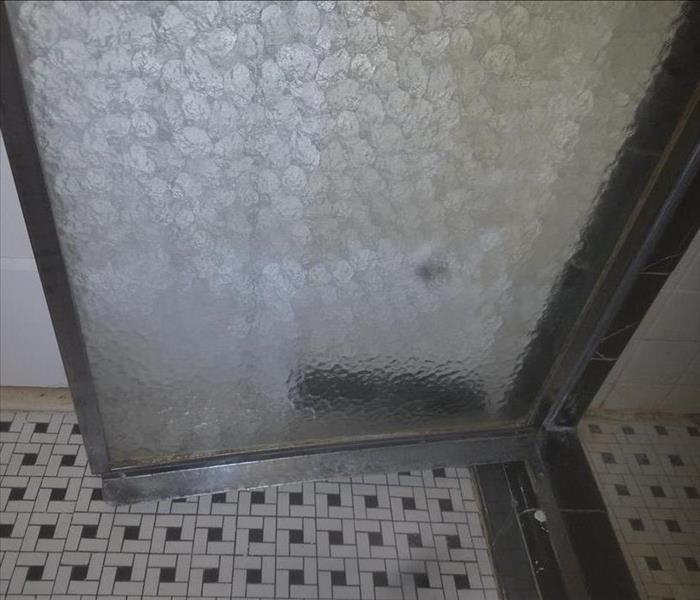 Bathroom Shower Door
Bathroom Shower Door
Here at SERVPRO of Hoboken/Union City we offer a wide array of services. While most jobs we receive are either fire, water, or mold jobs that is not always the case. With this job we received a call from a customer who thought they had mold in their shower. Even if you're unsure of whether something may or may not be mold we still advise that you call us at 201-656-0035 to ease your mind. Our team will inspect the potential mold and determine what the next steps are. It turns out the mold the customer thought she had was a build up of soap scum on the shower glass door. We gave the glass door a power wash and performed a deep clean to the surrounding areas. Pictured here is the glass door after our services.
Mold Removal VS. Mold Remediation
4/11/2018 (Permalink)
Since microscopic mold spores exist naturally almost everywhere, indoors and outdoors, removing all mold from a home or business is impossible. Some restoration businesses advertise “mold removal” and even guarantee to remove all mold. This is a fallacy.
A qualified restoration company understands the science behind mold and mold growth. SERVPRO Franchise Professionals have the training and expertise to remediate the mold in your home or business. Mold remediation focuses on getting mold levels back to normal, natural levels.
Every mold damage scenario is different and requires a unique solution, but the general mold remediation process stays the same. To learn more about our mold remediation process.
Who are you going to call? MOLD busters !
2/15/2018 (Permalink)
Mold is that person you went to high school with and hope to never see again but then one day you run into each other at the supermarket. No one ever anticipates mold growth in their property or hopes for it. Here at SERVPRO of Hoboken/ Union city we know no one wants to deal with pesky mold. We make it so you don't have to! Once you've established that you have mold growth in your property we will come in with our technicians fully equipped with the necessary equipment. First, we'd target the area of growth and isolate said area. Once we remove the surrounding area we will use SERVPRO products to prevent the growth of mold in the future. We'll make you forget you ever had mold growing in the first place.
Got Mold?
2/9/2018 (Permalink)
Who wants to deal with mold? I’m sure you answered no one to that question. Mold is the friend that comes over unannounced and the moment you see it you want it to leave. Here at SERVPRO of Hoboken/ Union City we want you to forget about your pesky friend Mr. Mold better yet, we’ll make it so you forget it ever existed. We have the unique tools here to make the mold stop in its tracks. Our crew members work to their fullest potential to ensure that the job is done professionally and passionately. This mold shown in the picture was isolated and then the surrounding wood was removed. The customer associated with this job was very happy with the results received.
Clean Up Your Leaves!
12/6/2017 (Permalink)
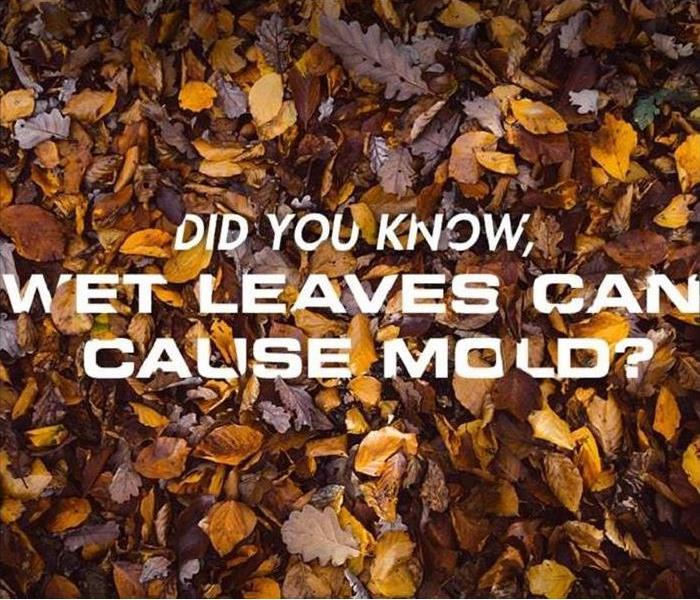 Photo courtesy of SERVPRO corporate.
Photo courtesy of SERVPRO corporate.
Did you know leaving wet leaves on the ground can have serious consequences?
We're currently in hurricane season so in other words there's going to be a lot of rain in the coming months. While the colors of the leaves are lovely to look at be sure you don't leave them on the ground for too long. Believe it or not wet leaves can actually cause mold and other harmful specimens.
Mold reproduces dark and wet areas; this is exactly why they can thrive underneath wet leaves. The leaves need to be picked up and properly disposed to prevent this outcome.
In the event that you do find yourself faced with a case of mold there's no need to panic. SERVPRO of Hoboken / Union City specializes in mold remediation so we've got you covered!
Mold Remediation in Home
5/19/2017 (Permalink)
Here at SERVPRO of Hoboken/Union City, we take pride in the long list of services that we provide. We are willing to help anyone that needs our help as a means of alleviating the stress they are going through. This particular job is the result of mold found in the home of one of our customers. Mold is definitely a sneaky culprit in the sense that you do not always see it. For instance, if there is a water leak or exposed water that has been sitting for a while these are the ideal conditions for mold reproduction to occur. Here at SERVPRO we take care of the mold by means of mold remediation. Pictured here is one of our crew members following mold procedure.
Mold Remediation in Bathroom
5/19/2017 (Permalink)
Here at SERVPRO of Hoboken/Union City and SERVPRO of Lower Manhattan we take pride in the long list of services that we provide. We are willing to help anyone that needs our help as a means of alleviating the stress they are going through. As we have said time and time again mold is among the list of problems you do not know you have until it is brought up to your attention. Mold reproduces in dark areas usually exposed to some kind of water or dampness. No one wants mold in their life so it’s our job to make it so you’d never know the mold was there to begin with. You can see in the picture on the left that the ceiling has spots of darker coloring. This is primarily where the mold was reproducing. Our crew went in with the proper SERVPRO tools needed for mold remediation and made it look "Like it never even happened."






 24/7 Emergency Service
24/7 Emergency Service
